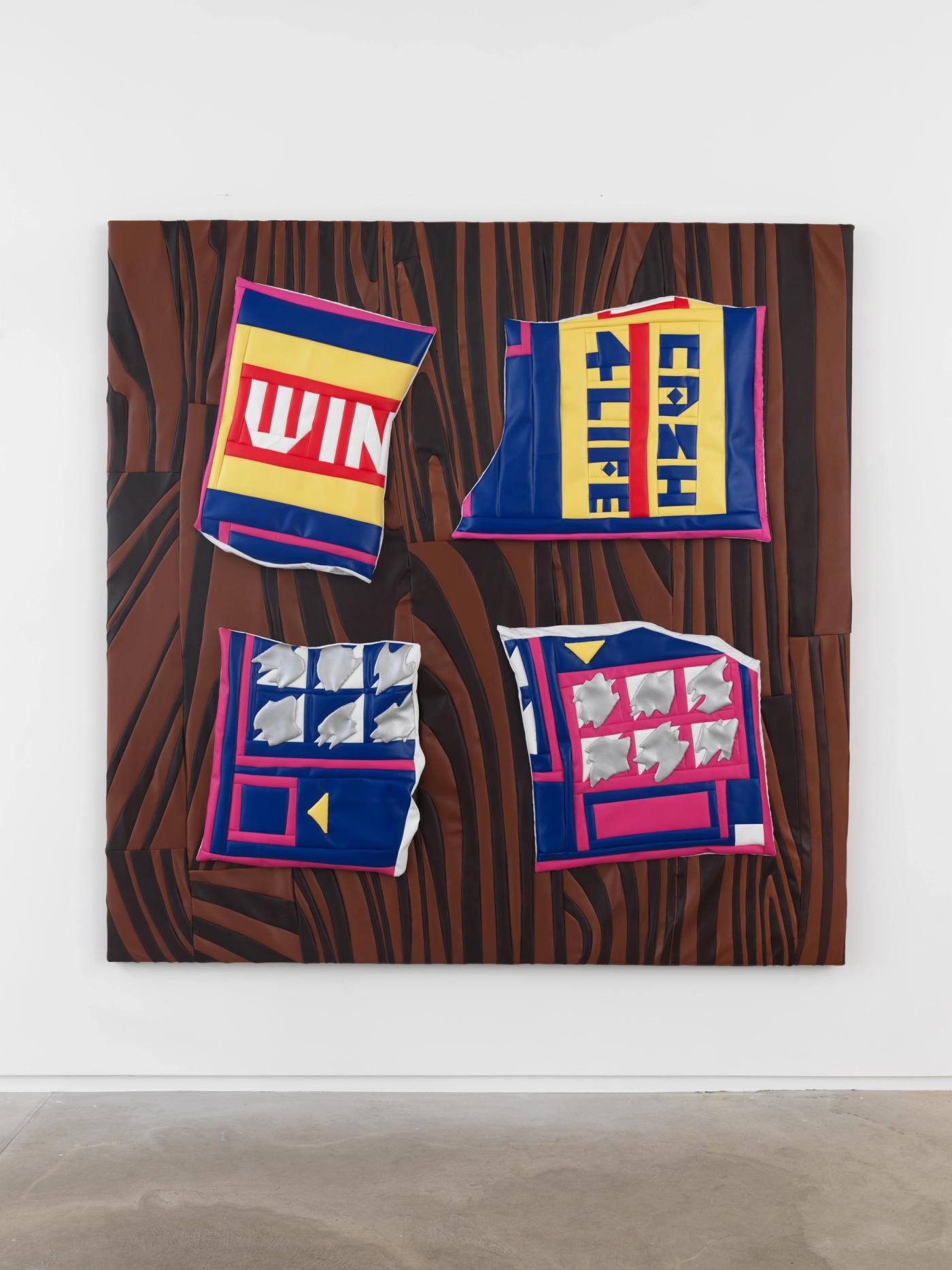
- Press:
- Vulture Magazine
56 HENRY is pleased to present Floors an exhibition of new work by Al Freeman on view from October 27 through December 4, 2022. Floors is Al Freeman’s third solo exhibition with 56 HENRY.
Al Freeman sits on Philip Roth’s couch nearly every day. She bought it at the estate auction, and now it’s the largest, darkest thing in her studio, the embodiment of the funny/horrible yin-yang of life. It’s the perfect perch for an artist who represents the world with a droll ennui. Droll, yes, but not sleepy. Each of the four vinyl sculptures that hang in the room resembles an assortment of iconic objects on a surface viewed from above: A dark woodgrain floor with lotto tickets torn and scratched; a luminous Scandinavian job populated by Alka-Seltzer packages; black and white tiles offset a chewable Pepto Bismol packet; a cement pavement cluttered with pennies and receipts. Just the usual sights, unremarkable things enlarged, purposefully out of scale with the intricately made backgrounds. They are as deadpan and profound as a Diane Arbus photograph (but funnier, and warily affectionate), from titles (Alka-Seltzer on Hard Wood), to subject, to material.
Each sculpture is a well-felt tableaux; Freeman is a noticer, picking up ideas while walking her dog. Her requirements for enlargement are that each object needs to be a lasting brand recognizable from color and graphic forms, and that the foreground and background function with each other. Working with vinyl gives each sculpture an unquantifiable weight, and it also signals permanence – like an infinite do-not-disturb -sign. They radiate in part because Freeman, whose drawing mode recalls the elegantly go-for-broke gestures of Cy Twombly, brings the same touch to cutting vinyl and sewing lines. The blonde wood grain, for example, is a swell of lines and curious architectures; the logos are approximated as rough forms. These are improvisational objects, and there’s verve in the stitch lines that delineate each part. A bit because it’s more arresting, and partly because she works surface by surface, the scale of each object only presents itself late in the process, making the final whole a combination of intuition and luck.
On the wall, Freeman’s sculptures are gently sagging and knowing monuments, so alive that they seem to be making mordant comments to each other. If there’s a critique of consumption, of carelessness, then it’s directed equally at the artist herself, but with a wise shrug. Like that couch, they contain most extremes, offer hints of stories, and most of all stand only for themselves.
-Dan Nadel, October 2022